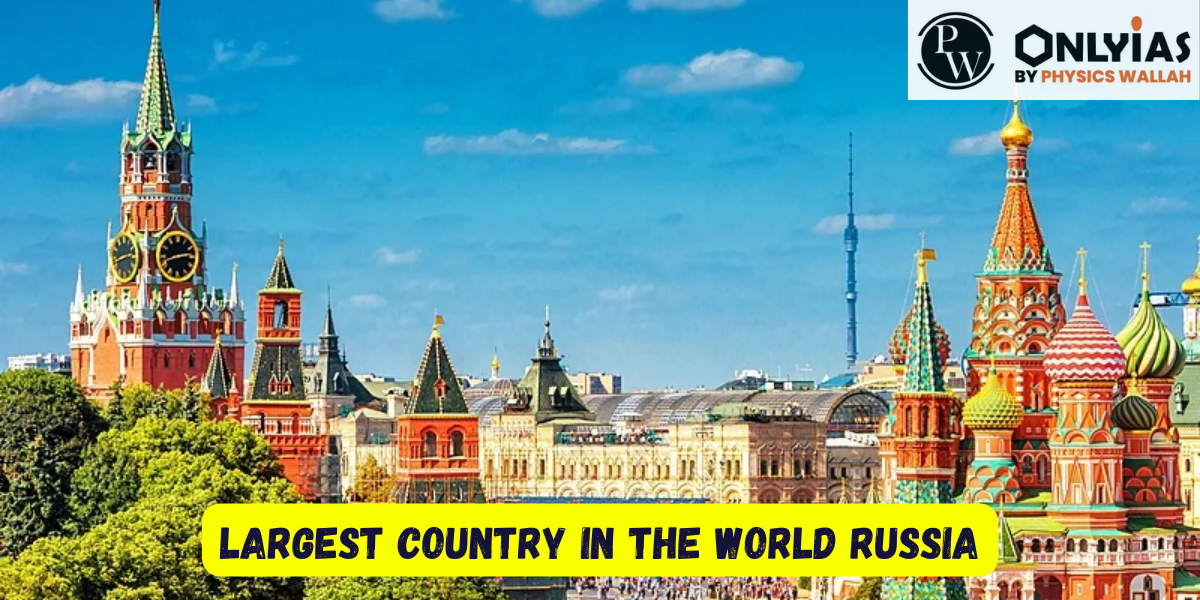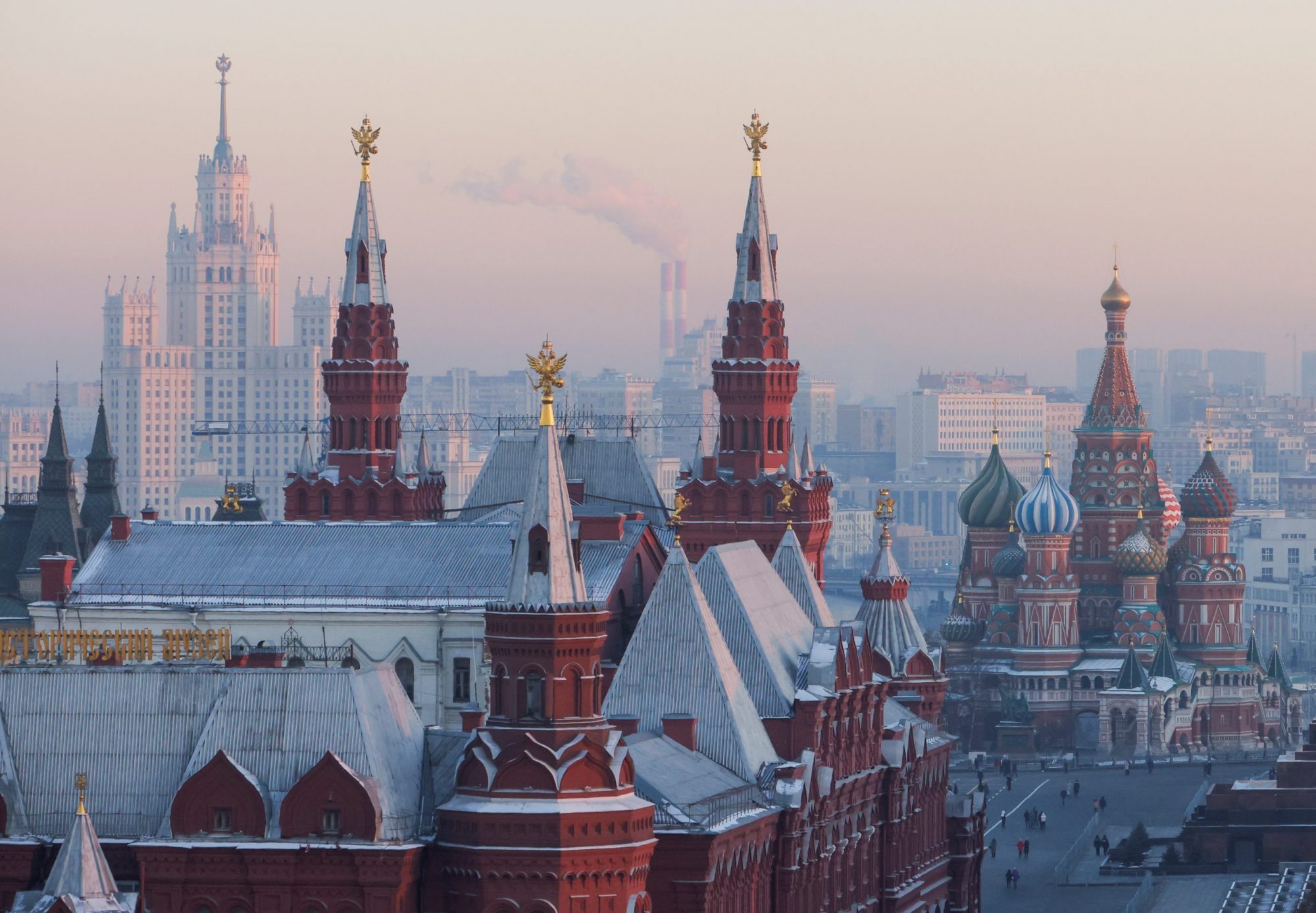Know about Russia, the largest country in the world, spanning 17,098,242 sq. km across Europe and Asia. Discover its diverse geography, rich history from Kievan Rus to the Soviet Union, and vibrant cultural mosaic of over 190 ethnic groups, making it a unique and influential global powerhouse.

Largest country in the world: Russia is renowned as the largest country on Earth, encompassing a total area of 17,098,242 sq. km, with 16,376,870 sq. km of land. This vast expanse accounts for approximately 11% of the world’s total landmass, which measures 148,940,000 sq. km.
The world is home to an incredible diversity of nations, each with its unique culture, history, and geography. Among these, some countries stand out for their vast land area, making them the largest in terms of territorial expanse. In this article, we will explore the largest country in the world, Russia, and delve into its geographic, historical, and cultural aspects.

Russia, the largest country in the world, is a land of awe-inspiring geographical diversity. Stretching across two continents, Europe and Asia, this transcontinental nation boasts a staggering land area that covers about 11% of the Earth’s surface. From the majestic Ural Mountains that separate its European and Asian territories to the vast Siberian taiga forests and the Arctic tundra, Russia’s geography is as vast and varied as its history and culture. In this article, we will embark on a journey to explore the world geographic overview of Russia, delving into its topography, natural landmarks, and unique geographical features that have shaped the country’s identity and historical significance.
Russia, officially known as the Russian Federation, is situated in both Eastern Europe and Northern Asia. It spans across two continents, making it a transcontinental country. It is bordered by a staggering number of countries, including Norway, Finland, Estonia, Latvia, Lithuania, Poland, Belarus, Ukraine, Georgia, Azerbaijan, Kazakhstan, China, Mongolia, and North Korea. Russia’s vast borders contribute significantly to its large land area.
Russia is the largest country globally, covering an expansive land area of approximately 17,098,242 square kilometers (6,601,668 square miles). This massive territory accounts for about 11% of the world’s land area, making it more than twice the size of the United States.
The geographic diversity of Russia is remarkable, ranging from vast plains to rugged mountains, dense forests, and arid deserts. The Ural Mountains act as the traditional boundary between Europe and Asia, dividing the country into two distinct regions. The European part of Russia is characterized by broad plains, while the Asian part features vast expanses of taiga forests and tundra.

Russia, with its immense territorial expanse and rich cultural heritage, holds a profound historical significance that stretches back to ancient times. As the largest country in the world, spanning across both Europe and Asia, Russia’s historical journey is a captivating tapestry of conquests, revolutions, and cultural evolution. From the formation of the medieval state of Kievan Rus to the grandeur of the Russian Empire and the revolutionary transformation into the Soviet Union, Russia’s history has shaped not only its own destiny but also the course of global affairs. In this article, we will embark on a captivating exploration of Russia’s historical significance, delving into the key events, dynasties, and ideologies that have left an indelible mark on this fascinating nation.
Russia’s history dates back to ancient times, with evidence of early human settlement found in various regions. Slavic tribes were among the early inhabitants, and the formation of Kievan Rus in the 9th century laid the foundation for the modern Russian state. The rise of Moscow as a powerful principality in the 14th and 15th centuries marked the beginning of Russia’s territorial expansion.
During the reign of Ivan the Terrible and subsequent tsars, the Russian Empire expanded rapidly, annexing vast territories across Central Asia, Siberia, and the Caucasus. By the 19th century, it was one of the largest empires in history. The Russian Revolution of 1917 led to the establishment of the Soviet Union, a communist state that continued to grow in size and influence.
With the dissolution of the Soviet Union in 1991, Russia emerged as an independent nation once again. It retained a significant portion of the former Soviet Union’s territory, including many of its largest and most populous regions. Since then, Russia has faced numerous challenges and undergone significant socio-political changes, shaping the country into its modern form.

Russia, the largest country in the world, is not only renowned for its vast territorial expanse and historical significance but also for its rich cultural diversity. Spanning across two continents, Russia is a melting pot of various ethnicities, languages, and traditions, making it a fascinating tapestry of human civilization. From the bustling cities of Moscow and St. Petersburg to the remote villages of Siberia, Russia’s cultural landscape is as diverse as its geographical one. In this article, we will delve into the multifaceted aspects of Russia’s cultural diversity, exploring its ethnic groups, languages, religions, and traditional customs that contribute to the nation’s unique identity.
Russia is incredibly diverse in terms of ethnicity, with over 190 recognized ethnic groups. The majority of the population identifies as Russian, but there are significant minority groups, including Tatars, Ukrainians, Bashkirs, Chuvash, and Chechens, among others. Russian is the official language, but numerous regional languages and dialects are spoken throughout the country.
Russia, the largest country in the world has a rich cultural heritage influenced by its historical ties to Eastern Orthodoxy. The Russian Orthodox Church plays a vital role in the country’s spiritual and cultural life. Additionally, various folk traditions, music, dance, and art form an integral part of Russian culture, reflecting its diversity and historical depth.
Russia’s status as the largest country in the world is not just defined by its vast land area, but also by its rich history, diverse geography, and vibrant culture. From the majestic expanse of Siberia to the iconic cities of Moscow and St. Petersburg, Russia holds a unique place in the global landscape. Despite the challenges it has faced and continues to face, Russia’s resilience and influence on the world stage make it a country of immense significance and intrigue.
Russia claims the title of the largest country in the world, encompassing a vast expanse of 17,098,250 km² across Eastern Europe and Asia. Canada, with its notable two million lakes, follows closely behind as the second-largest country, covering an impressive area of 9,879,750 km².
The map of the contiguous United States portrays the country as the third-largest in the world, covering just under 40% of the North American continent.
As per the latest data from the World Population Forum, China maintains its position as the world's most populous country with a staggering population of nearly 1.5 billion citizens. Meanwhile, India follows closely behind, securing the second spot and is projected to surpass China in population very soon. As of January 2022, the United States ranks third with a population of over 330 million people.
The top ten largest countries in the world by land area are Russia, Canada, the United States, China, Brazil, Australia, India, Argentina, Kazakhstan, and Algeria.
The smallest country by area is Vatican City (0.49 km²), while the largest country is Russia (17,098,242 km²).
<div class="new-fform">
</div>
